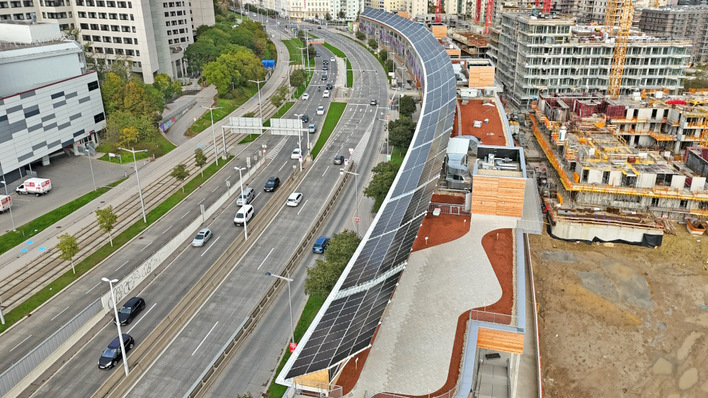The Flying School Feuerstein (a registered non-profit organisation) in Franconia got about 500 kilowatts - from exactly 1,349 solar modules - of solar power on its roofs. By renting the roof areas to Windpower, the association can finance the renovation of Eternit roofs in need of restoration.
The renovation of more than 2,300 square metres of roofing and parts of the drainage as well as the installation of the solar system were carried out in one construction project. The existence of the buildings is now secured for a long time.
Existing transformer renewed
In order to connect the high-performance solar power plant to the electricity grid, the site's electricity connection was upgraded. The Ebermannstadt public utility company took over the grid extension and replaced the existing transformer with a more powerful one. Windpower laid a total of 900 metres of new power cables. Two cables with a cross-section of 300 square millimetres each were used to connect the site to the power grid.
Solar power for EVs
The solar power plant enhances the Burg Feuerstein airfield with an ecological image. And: "The solar power generated by the photovoltaic system is more cost-effective," says Armin Schmid, project developer for photovoltaics at Windpower. "The operators of the flight school and the restaurant should also benefit from this. We will offer electricity consumers on site to purchase the clean green electricity directly."
See also: Carbon-free air traffic needs 140,000 square kilometers PV plants
In addition to using solar energy for existing power consumption, the new grid infrastructure opens up interesting perspectives: "In the future, pilots and visitors will be able to fill up on solar power for their e-cars via planned charging stations," explains Tanja Adamski, operations manager at the Franconian Flying School Feuerstein. "But the expansion of the grid infrastructure makes it possible to provide significantly higher outputs and points in a new direction for private aviation - the era of electric aircraft."
With the connected load of 500 kilowatts and around 500,000 kilowatt hours of solar power per year, the airfield now offers the appropriate infrastructure to charge electrically powered e-aircraft. They are usually en route for shorter distances. (mfo)
Also interesting: Hydrogen-based fuels can jeopardize climate protection







